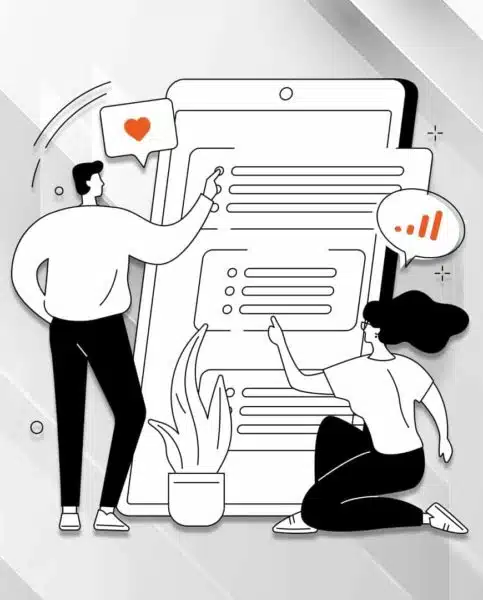5 tips for building customer trust during the supply chain crisis
The supply chain crisis isn't going anywhere just yet, but The Brooks Group has advice for sales, marketing and customer success teams on how to navigate it.
The supply chain crisis continues, partly caused by COVID-19, partly exacerbated by war in Europe, and beyond the capacity of marketers to solve. The Brooks Group is a sales management, training and consulting firm. “We work with sales organizations, primarily B2B, to help them equip their teams with effective processes and the right sales skills,” said VP of sales performance research Michelle Richardson.
We spoke to Richardson and her colleague Russ Sharer, director of strategic sales excellence, about some lessons they’re teaching sales organizations, not least in their recently published book “Agile & Resilient: Sales Leadership for the New Normal.” The advice is good for marketing organizations too.
Positive strategies to build trust. Richardson and Sharer are offering advice to their clients which they agree is good advice for marketing organizations too.
- Be transparent. “Make sure that when you are dealing with customers you are updated them along the way in terms of what’s happening,” said Richardson.”If you have product delays, let them know there are product delays – be clear in communicating that.”
- Be proactive. “Reach out when you have new information,” said Sharer. Some dealers find it difficult to have repeated conversations about problems with manufacturing or delivery. Sharer’s question for them: “If a manufacturer knew a delivery was delayed, when would you want to know?” The answer, of course, is immediately. “Well why wouldn’t you do the same for your customer? While it may be painful at that moment, you are building a reservoir of trust that will ultimately benefit you.”
- Build trust. “In order for someone to do business with you, they have to trust both the individual they’re dealing with and the organization too,” said Sharer.
- Have empathy. Not just with your customer, but with your employees. Dealing with frustrated customers day after day wears down employees on the front line. Sharer tells the story of a CEO who was asked to spend an hour or two taking customer calls to better understand the situation. His reponse? “’I’m not going down there. Do you know the kind of grief those people are taking?’That right there says a leadership vacuum as well as an issue.”
- Accept there’s a new normal. “I worked with a guy one time who joked, never confuse selling and delivery,” said Sharer. “Always get the order, then figure out how to fill it. That’s old school to me. If you make a commitment and miss it, people are just going to go somewhere else.
Dig deeper: How changes in logistics and the supply chain will impact customer experience
The state of the crisis. “Some of our clients are in the professional services business, but most of our customers have real physical products that they deliver – industrial manufacturing and distributing, medical devices, agro-chemicals,” said Sharer. “They’re seeing the supply chain issue up close.”
COVID is still driving many of the problems with ports in Shanghai and other parts of China still dysfunctional. “I wouldn’t put COVID in the past,” Sharer said. The situation in Ukraine is not yet causing supply shortages (with the exception of food — it’s a major grain exporter) but it is having an impact through fuel shortages causing additional price increases in transportation.
“The other piece,” said Richardson, “is that it adds uncertainty, unrest and upheaval, and that certainly can impact business’s outlook – how they view and mitigate risk.”
Why we care. Delivering on commitments, or being transparent about it if you can’t, is an essential element of providing a great customer experience. Marketing, sales and customer success teams may be downstream from manufacturing, but supply chain issues can leave them in the lurch, like Wile E. Coyote, running on thin air.
The experience we’ve had as consumers over the last two or more years, increasingly buying online, has raised our expectations across the board — including when making considered, often expensive business purchases. B2B needs to learn how to live with supply chain challenges, many of which are not easily tractable. “I’d like to say this is going to be the last crisis,” said Sharer, “but I’d be willing to bet you it’s not.” We didn’t take the bet.

Ever wonder how frequently marketing software is replaced?
Here’s the answer.
Download the 2022 MarTech Replacement Survey!
Contributing authors are invited to create content for MarTech and are chosen for their expertise and contribution to the search community. Our contributors work under the oversight of the editorial staff and contributions are checked for quality and relevance to our readers. MarTech is owned by Semrush. Contributor was not asked to make any direct or indirect mentions of Semrush. The opinions they express are their own.
Related stories